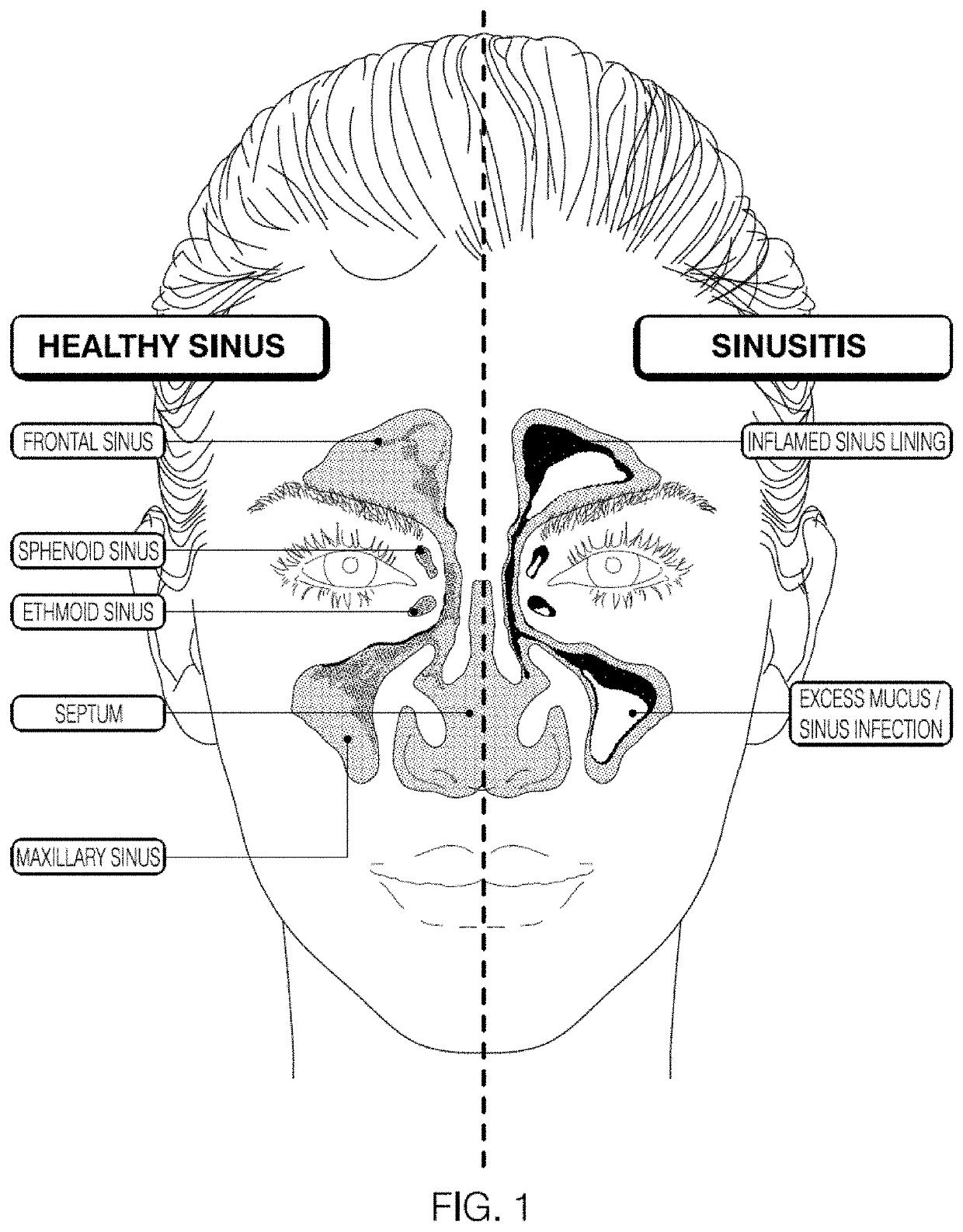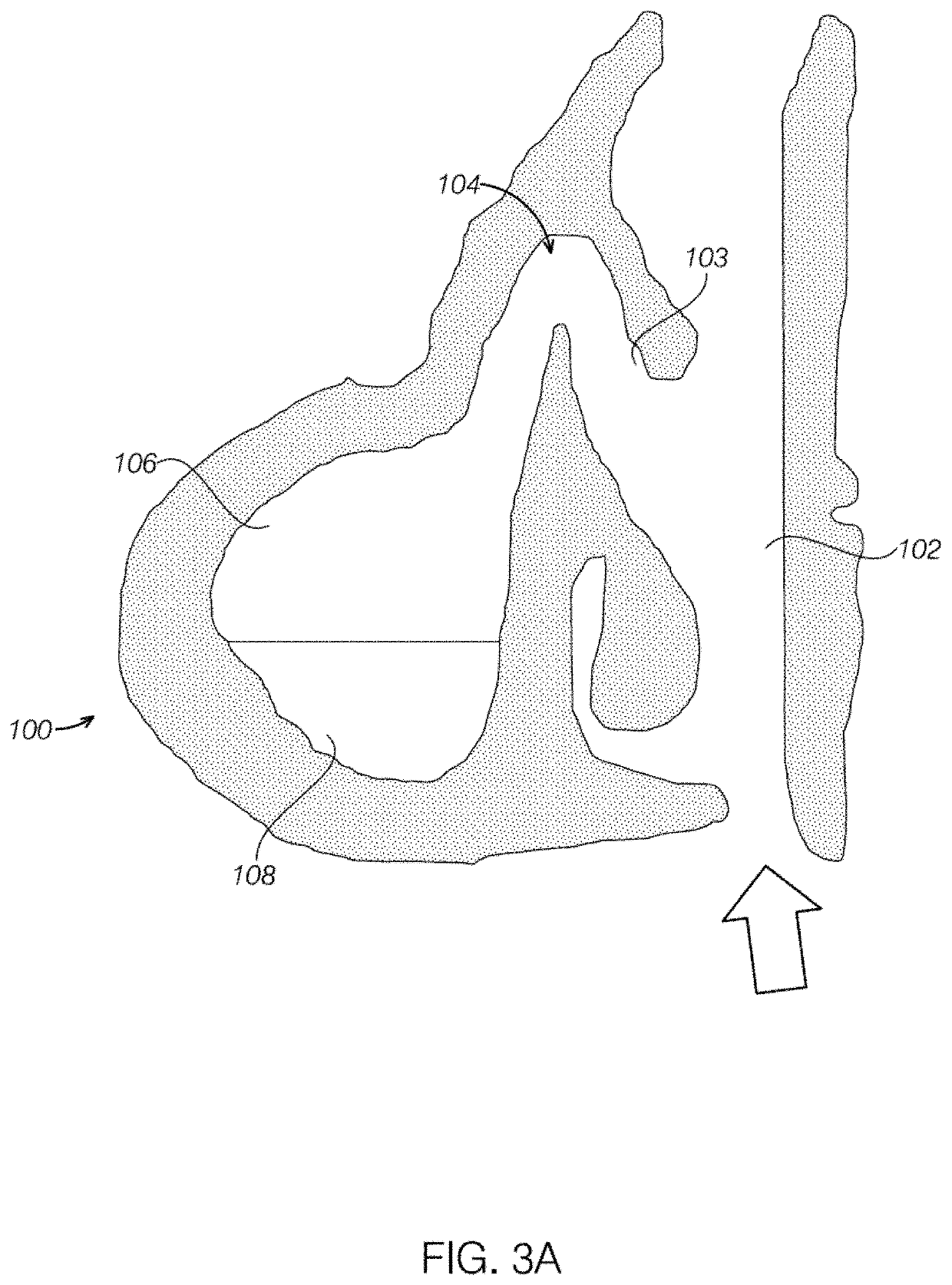Devices and assays for diagnosis of viral and bacterial infections
a technology applied in the field of diagnostic devices and assays for viral and bacterial infections, can solve the problems of difficult to diagnose the cause of sinusitis as either, the initial diagnosis of sinusitis remains a challenge for physicians, and the condition is wors
- Summary
- Abstract
- Description
- Claims
- Application Information
AI Technical Summary
Benefits of technology
Problems solved by technology
Method used
Image
Examples
example 1 (
Lysis Buffer)
[0171]As shown in FIG. 27, different lysis buffers were tested to determine the best buffer composition for successfully lysing the cells corresponding to Haemophilus influenzae (H. flu), Moraxella catarrhalis (M. cat) and Streptococcus pneumoniae (S. pneumo). Some of the potential candidates tested included N-Lauroylsarcosine, Triton X100, Sarkosyl, Sarkosyl and sucrose, and Bugbuster (Novogen). Standardized samples with known concentrations of Haemophilus influenzae, Moraxella catarrhalis and Streptococcus pneumoniae were used to test the effectiveness of each of these buffers. Based on the lysing data, the sucrose and Sarkosyl lysis buffer composition appeared to be the most effective in being able to lyse all three cell types. Importantly, many combinations (including combinations not including sarkosyl and sucrose) did not work for all three cell types and therefore may not be compatible with a combined assay for detection of all three cell types.
[0172]Thus, in gen...
example 2 (
Swabbing Material Selection)
[0174]Experiments testing the optimal sampling swab material was also performed. Because the region where the sample is to be collected, a subject's nasal and sinus cavity, is a fairly sensitive area, it is important to be able to quickly and effectively gather enough sample material for assaying. Also, it would be desirable only sample the subject's nasal and sinus cavities once because repeated sampling can cause irritation to the subject's nose and sinus cavities. In addition, any attempts to gather sample after a first try may elicit an autonomic response of excess mucous in the nasal passage that may dilute the sample collected or blood. While materials as cotton swabs and gauze can be used, two commercially available swab materials were tested for their ability to quickly take up sample. Hydraflock, Ultraflock, and Purflock were tested for their ability to take up water, ATS-M (artificial test soil) lab soil containing mucin, and bacteria in ATS lab...
example 3
[0176]Following sampling with a device as described above for the collection device, the swab with the sample is inserted into the lysis buffer by fully extending the swab tip and inserting into an appropriate volume of lysis buffer, as shown in FIG. 26. In this example, the swab positive end goes into a tube with the lysis buffer (the swab may be the swab of a sample device, such as shown in FIG. 25K). The swab may be mixed or agitated in the buffer, and removed (e.g., after between 1-30 sec). The bacteria may be lysed within the sample buffer by the action of the lysing buffer. See FIGS. 28 and 29 for examples of lysing buffer (FIG. 28) and dilution buffer (FIG. 29). The sample buffer may then be directly applied to the assay or it may be diluted (e.g., 1:10) in the lysis buffer or a second buffer (a dilution buffer, e.g., a Tris buffer), which may aid in wicking on the membrane. 100-200 microliters of sample may then be loaded into the port on a lateral flow cartridge, possibly f...
PUM
| Property | Measurement | Unit |
|---|---|---|
| w/w | aaaaa | aaaaa |
| w/w | aaaaa | aaaaa |
| distance | aaaaa | aaaaa |
Abstract
Description
Claims
Application Information
 Login to View More
Login to View More - R&D
- Intellectual Property
- Life Sciences
- Materials
- Tech Scout
- Unparalleled Data Quality
- Higher Quality Content
- 60% Fewer Hallucinations
Browse by: Latest US Patents, China's latest patents, Technical Efficacy Thesaurus, Application Domain, Technology Topic, Popular Technical Reports.
© 2025 PatSnap. All rights reserved.Legal|Privacy policy|Modern Slavery Act Transparency Statement|Sitemap|About US| Contact US: help@patsnap.com



